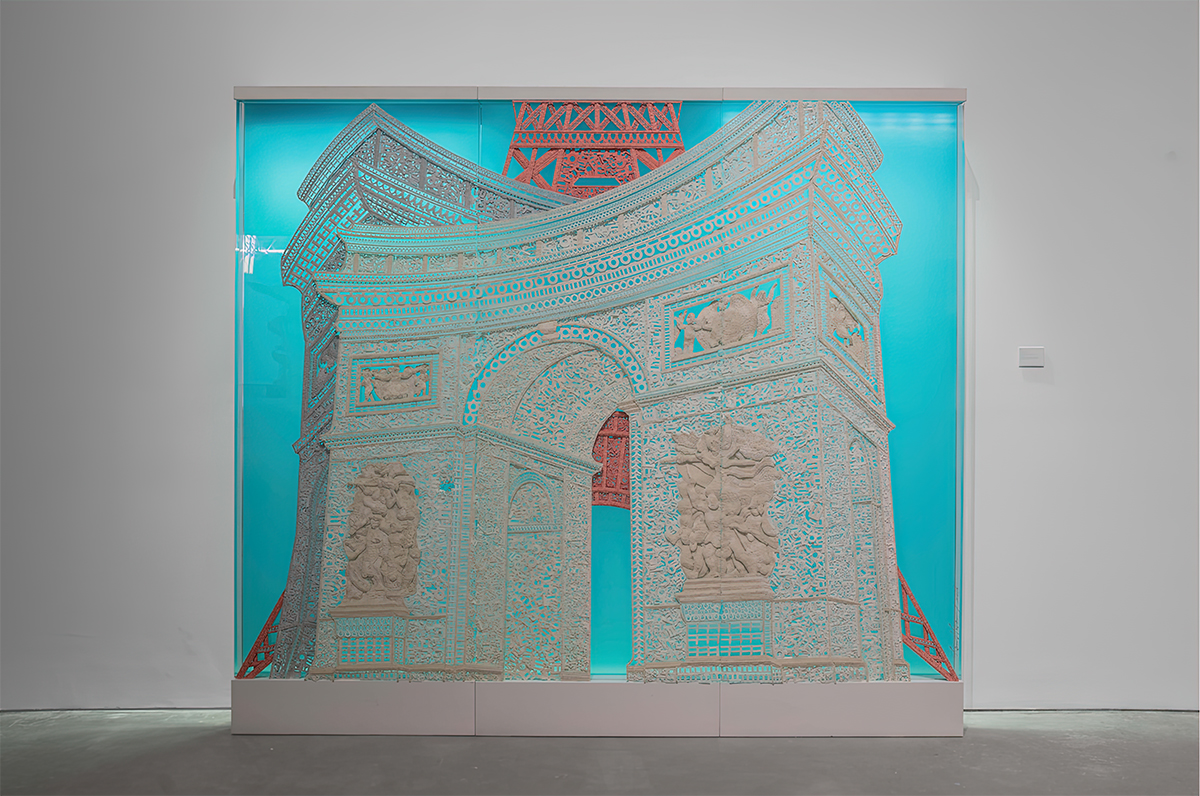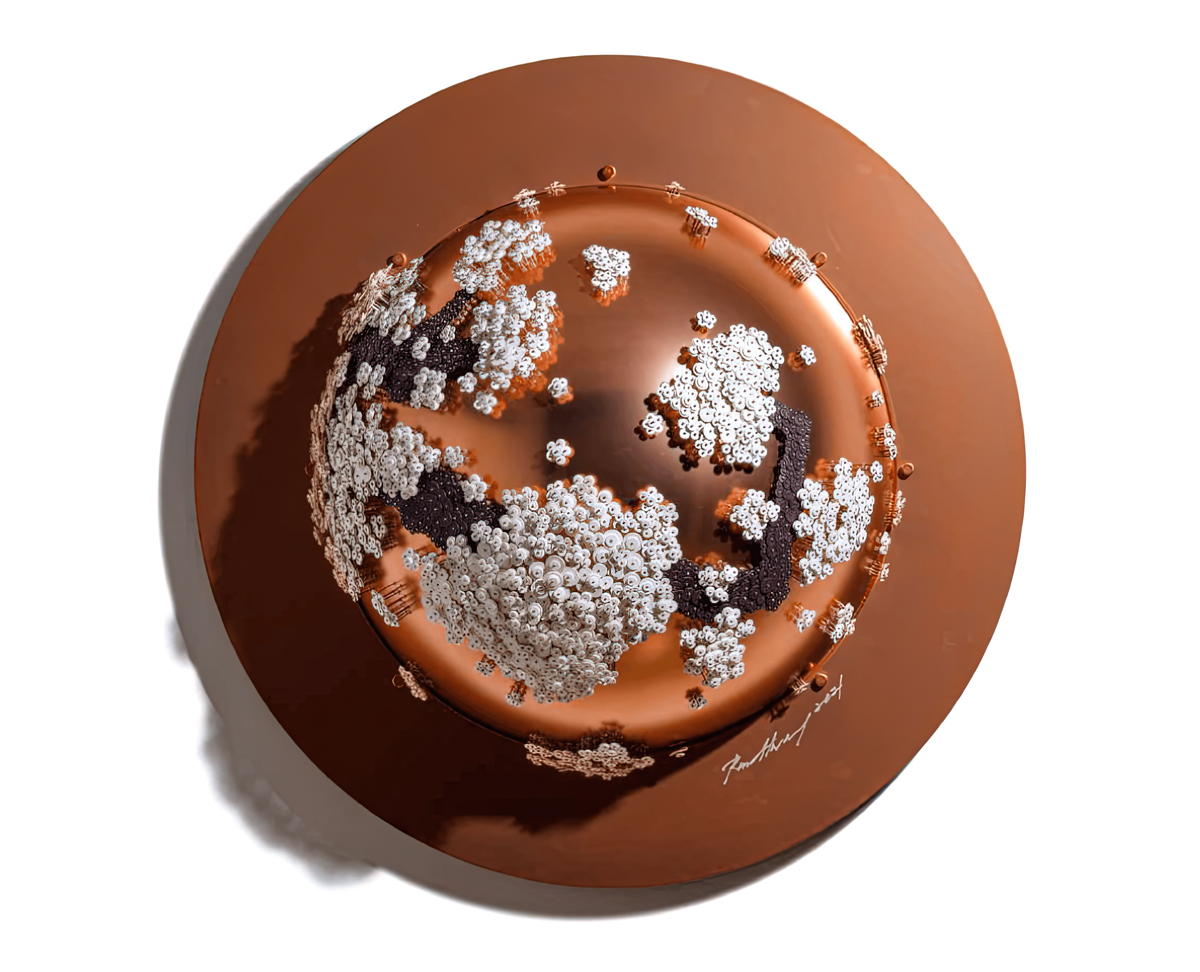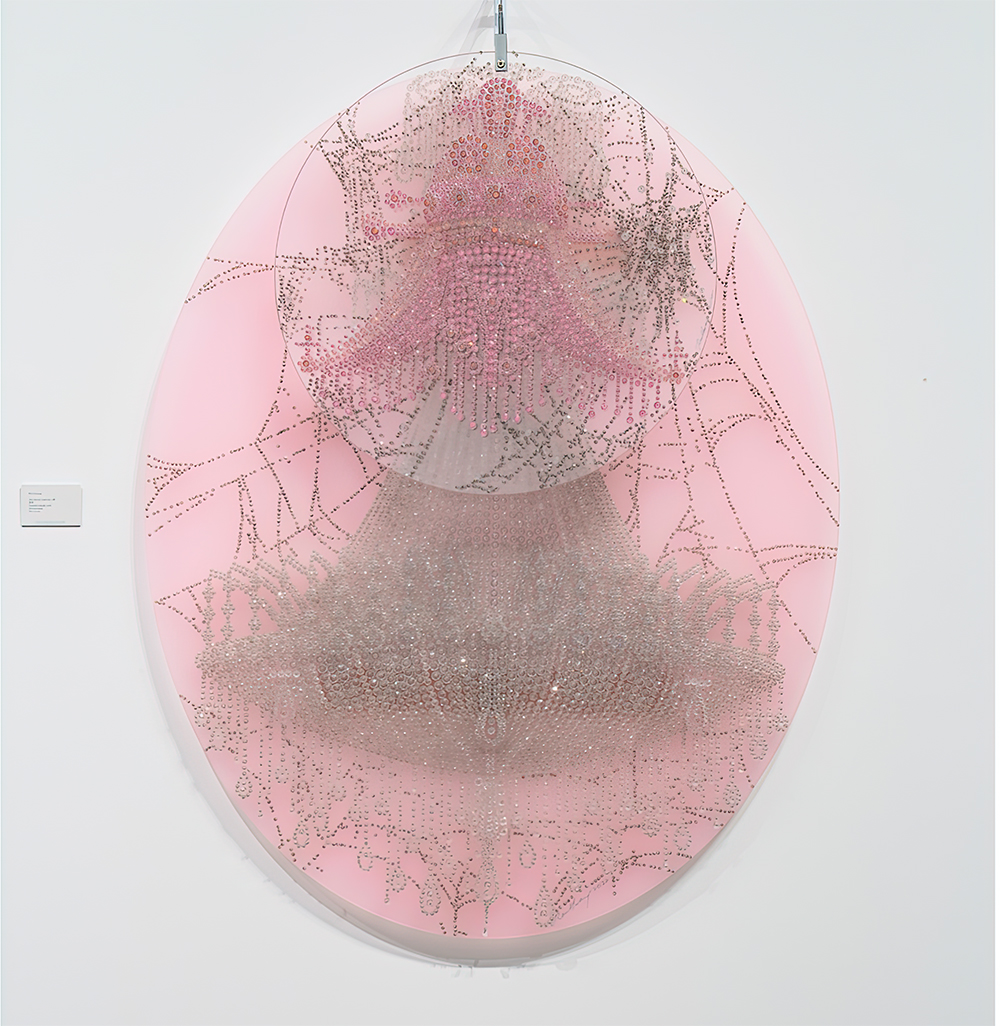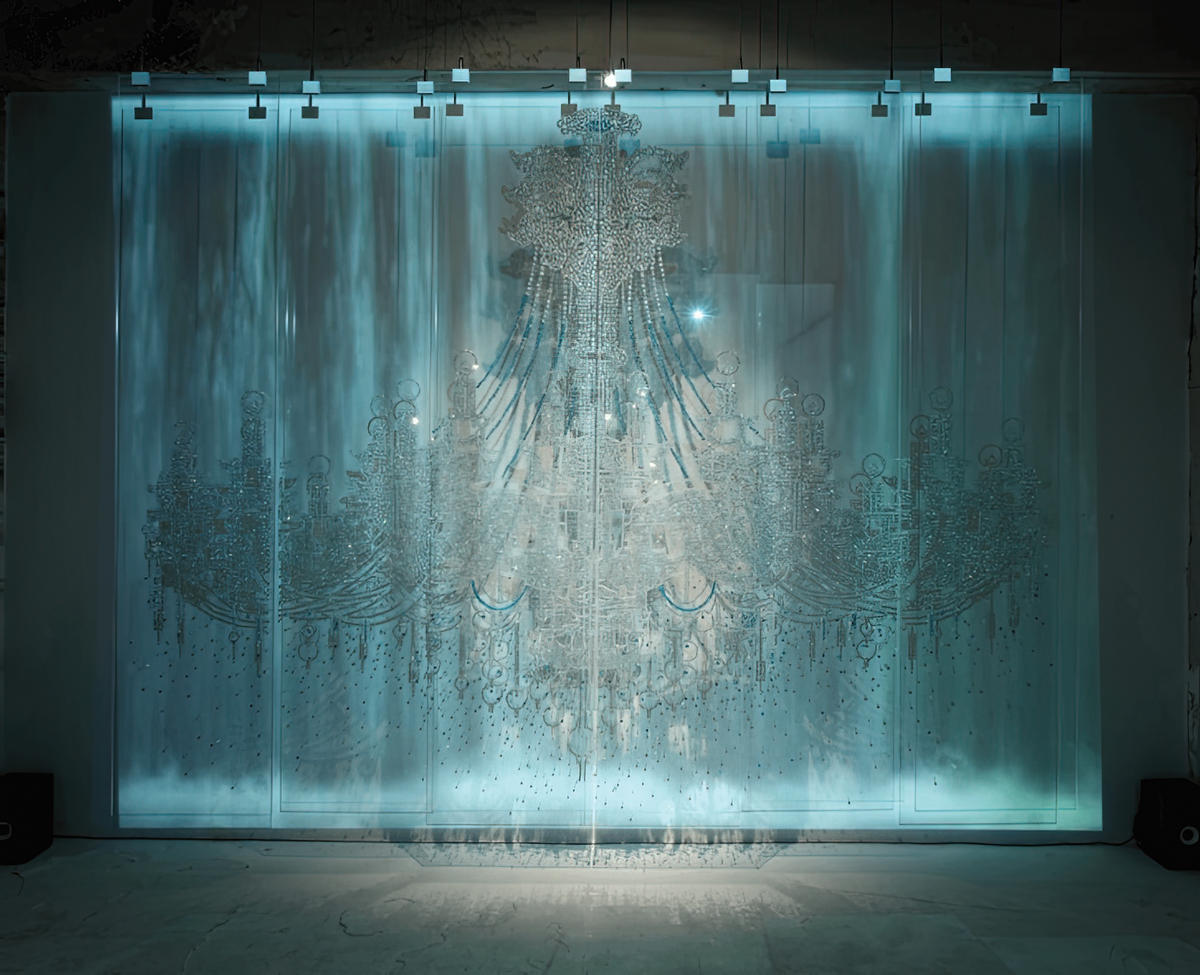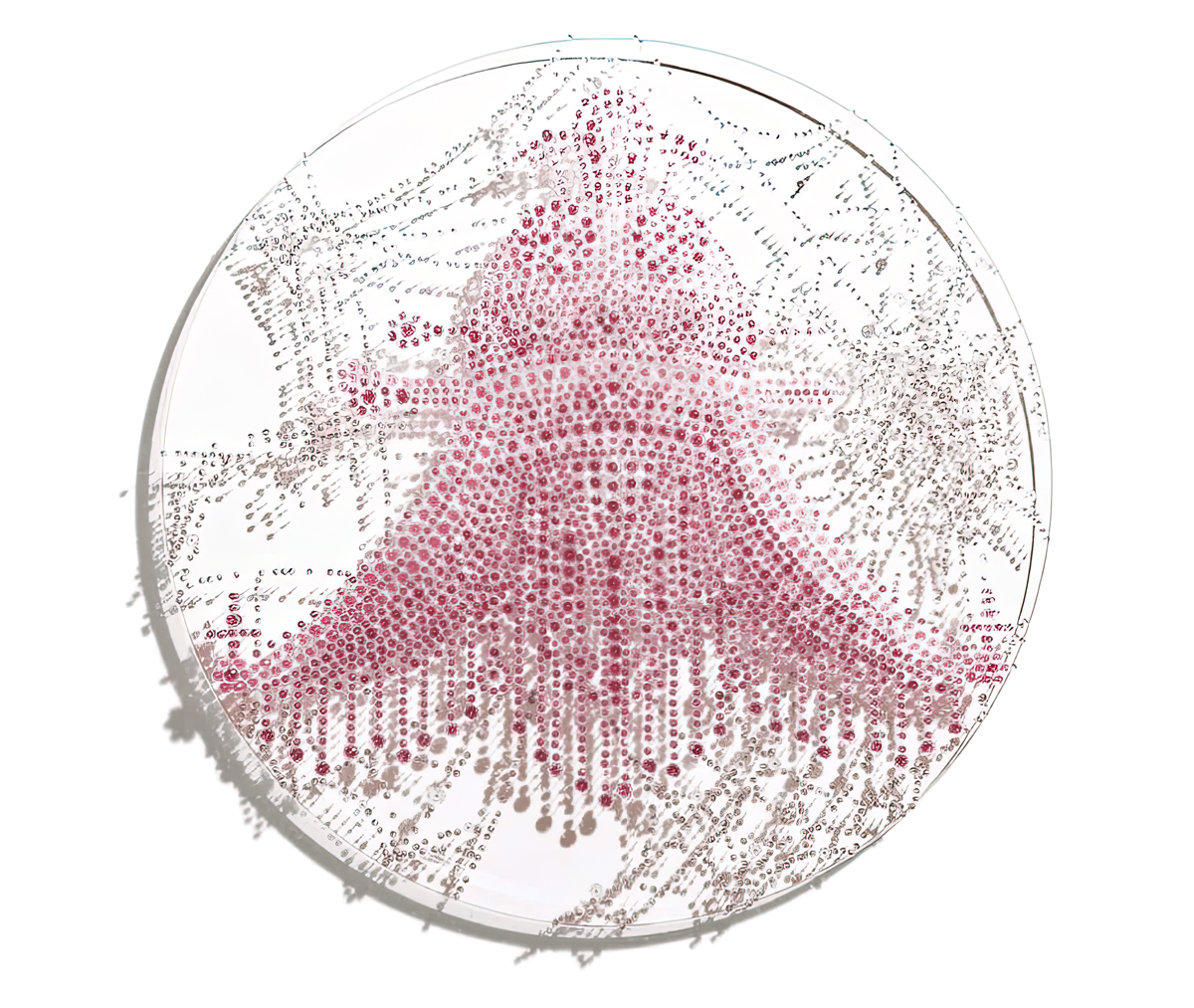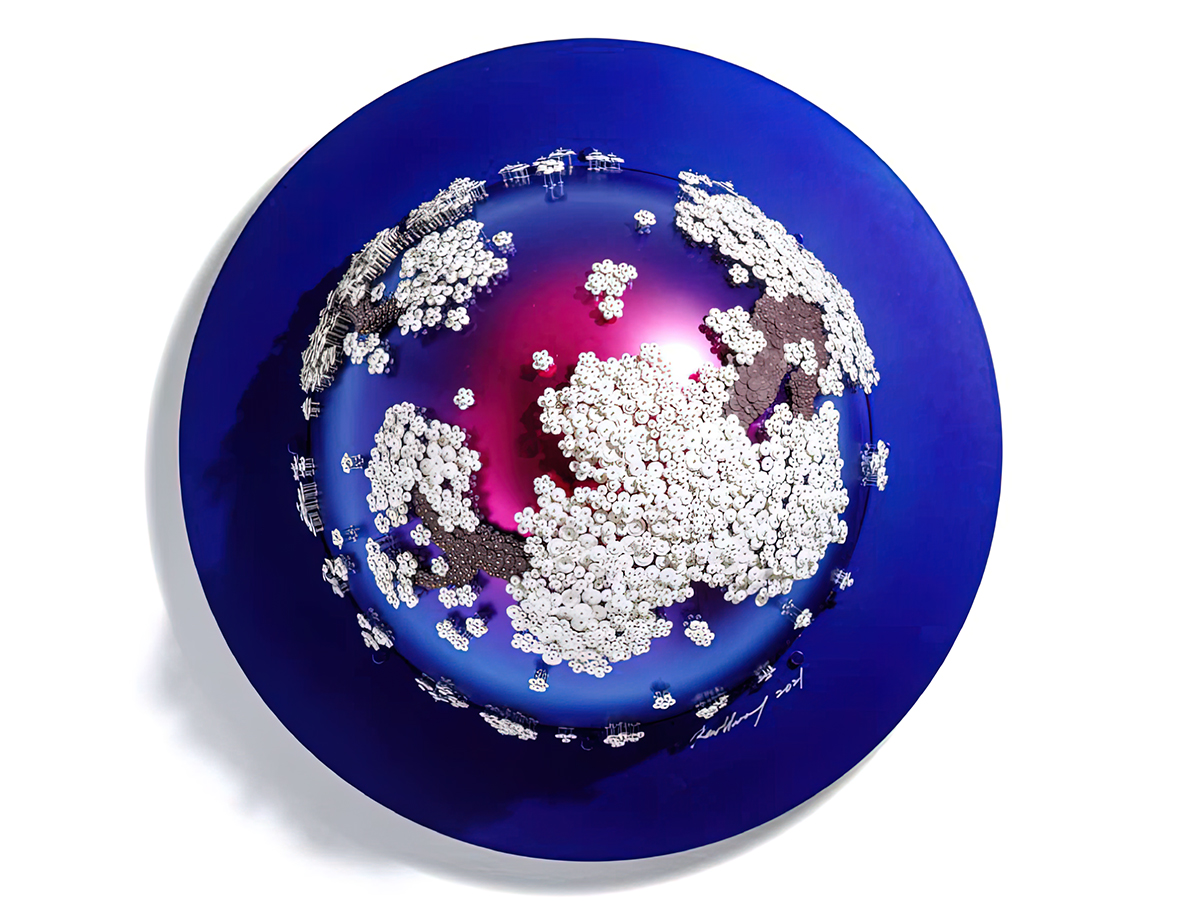ART CITIES: Dubai-Ran Hwang
![]() Ran Hwang is best-known for creating intricate, large-scale Installations, part mural, part sculpture. Although some of her works may look simple from a distance, a closer inspection shows the extreme level of detail in her work. The Korean-born artist uses thousands of pins, beads and buttons to create intricate images of vessels, birds, and even people.
Ran Hwang is best-known for creating intricate, large-scale Installations, part mural, part sculpture. Although some of her works may look simple from a distance, a closer inspection shows the extreme level of detail in her work. The Korean-born artist uses thousands of pins, beads and buttons to create intricate images of vessels, birds, and even people.
By Efi Michalarou
Photo: Leila Heller Gallery Archive
Ran Hwang’s Korean heritage as well as her experience living and working in the United States influence her art- making. Instead of painting on canvas, she adheres buttons, beads, crystals, pins, and threads to Plexiglas and wooden panels. Ran’s work is both conceptual and practical, as she engages with Zen Buddhist ideology of repetition through the execution of her artistic process. For the most part, Hwang’s choice of materials allows her audience to become engaged in both viewing and sensorially exploring these assemblages at the same time. Made of thousands of tiny buttons, crystals, beads, and threads on pins, rising just above the magnificent surfaces from which they protrude to cast shadows and paint pictures with pointillistic mastery; Ran Hwang’s work cascades. As they cascade, they charm, educate and surprise the onlookers. Her creations can be characterized as a series of isolated actions, often on walls, that combine to form larger works. Single particles join hands to meditatively create greater cascading movements or motion, waves of substance, fully present and somehow alive. Each piece is carefully placed to depict something like motion, with one layer positioned over another as intricate sub-events endlessly combine for an overall effect that is euphoric, transcendent and whole. Born in the Republic of Korea in 1960, Ran Hwang currently lives and works in both Seoul and New York City. Before coming to NY in 1997 to pursue her education at the School Of Visual Arts, she trained as a painter in Seoul. So, with a strong start in the fundamentals, she started grad school in NYC as a painter, working as a designer for an embroidery factory in the garment district to make ends meet. While there, she discovered boxes of unused buttons, and was struck by the lack of attention they received. Her engagement with materials became increasingly sculptural as she moved from small collage pieces with buttons to her first large installation in Soho on her studio wall. These works charted a path forward for Ran. In 2001, at her studio in Dumbo, Hwang observed the twin towers collapse during 9/11 from her own window. This left a great impression on her, leading her to contemplate ideas of life, death, and rebirth that would translate in her work for years to come. Today she has also expanded her work to include multimedia. several large and elaborate installation pieces built out of the everyday materials she loves, innovative production methods, and is rooted in budding 21st-century global contemporary art practices. Hwang’s motifs of intricate blossoms and Buddha’s – which appear across a variety of media – stem from her fascination with Zen Buddhism. Buddhism is integral to Hwang’s creative process and labor-intensive execution. To construct much of her work, Hwang creates paper buttons by hand, hammering each one approximately twenty-five times until it is secure. Her process requires the utmost concentration and discipline, recalling the meditative state practiced by Zen masters.
Photo: Ran Hwang, Healing oblivious aqua, 2023 Paper Buttons, Beads, Pins on Plexiglas 173 x 300 cm, © Ran Hwang, Courtesy the artist and Leila Heller Gallery
Info: Leila Heller Gallery, I-87 Alserkal Avenue, Al Quoz 1, Dubai, UAE, Duration: 27/2-30/4/2023, Days & Hours: Mon-Fri 10:00-19:00, Sat 11:00-19:00, www.leilahellergallery.com/
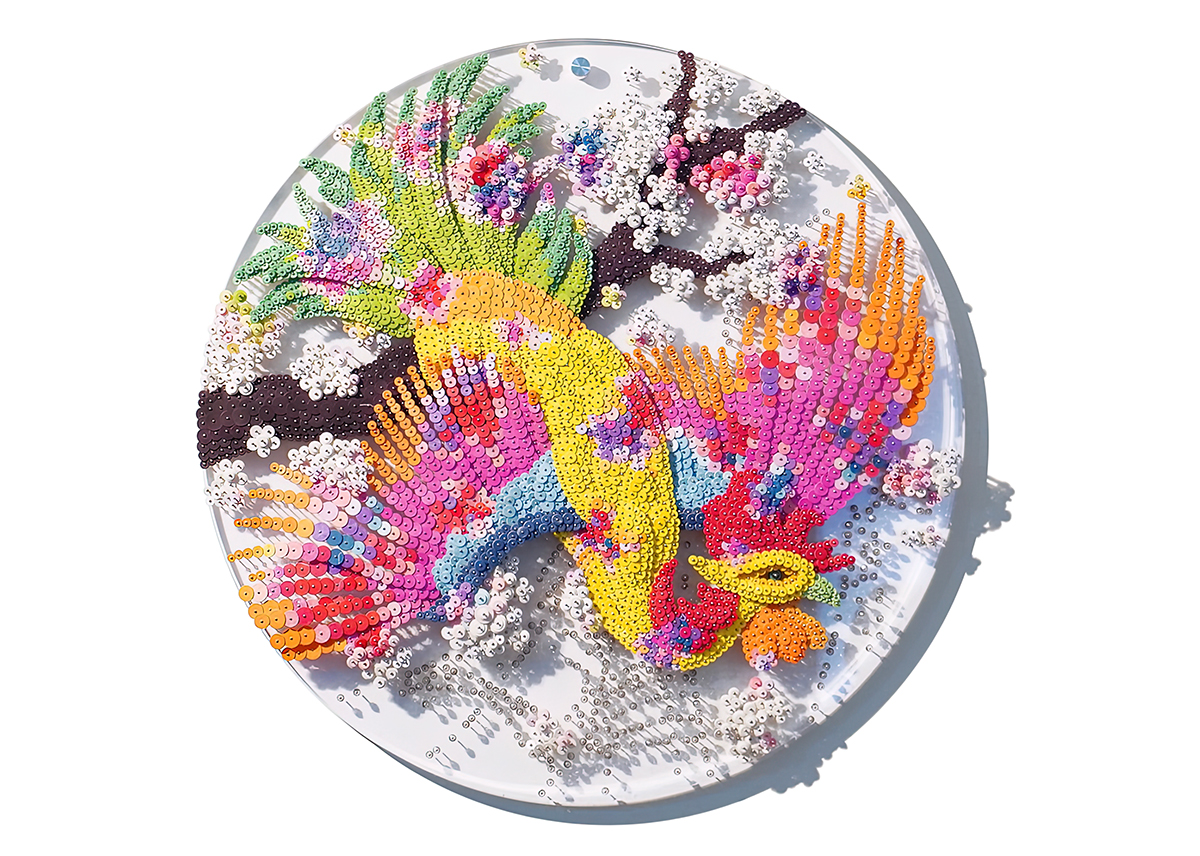
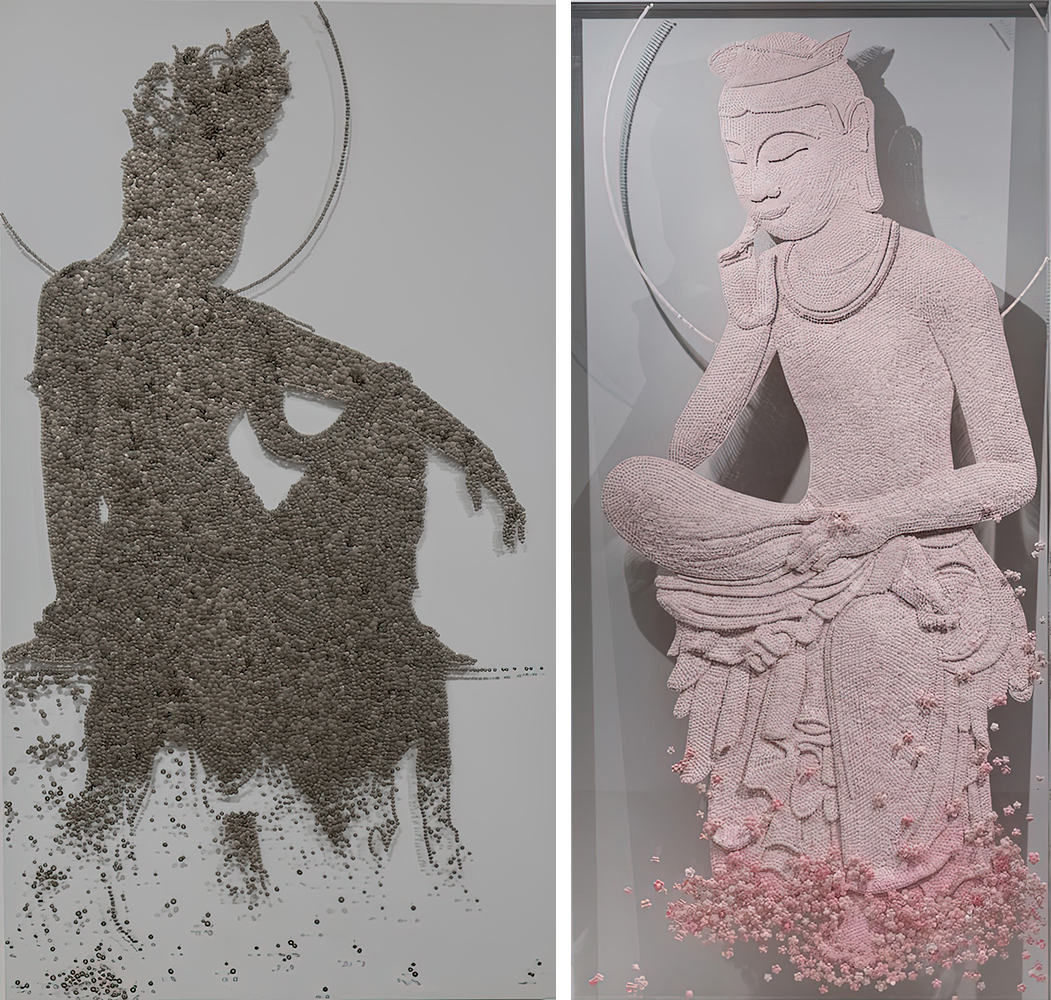
Right: Ran Hwang, Contemplation Time, 2014, Paper buttons, beads, crystals, pins on plexiglass 237 x 115 cm, © Ran Hwang, Courtesy the artist and Leila Heller Gallery
